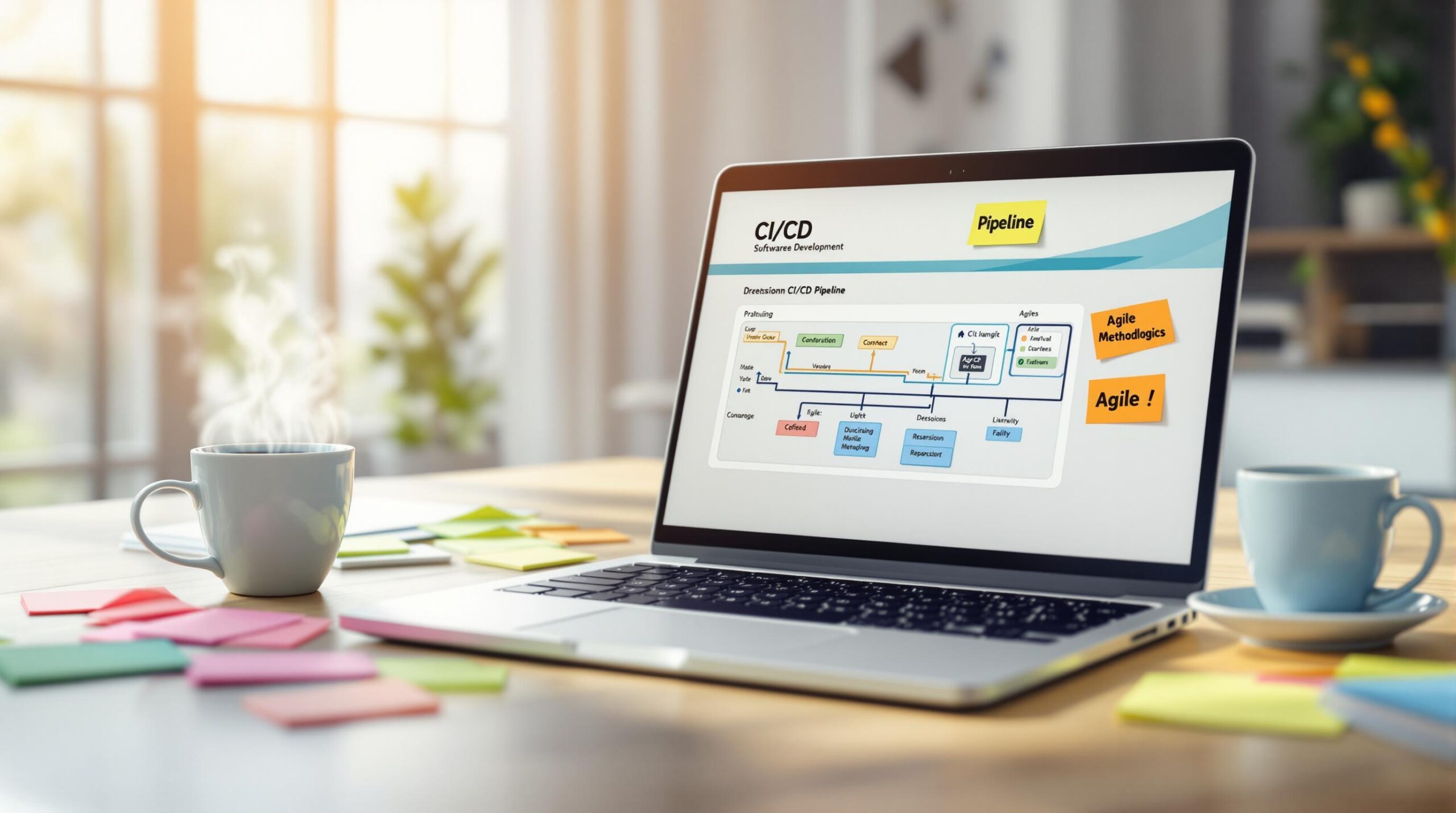Your final year project is more than an academic requirement – it’s your chance to showcase technical skills, solve practical problems, and impress potential employers. Here’s how to make the most of it:
- Start with your skills and goals: Identify your strengths (e.g., Python, AI, web development) and align them with career aspirations.
- Research industry trends: Focus on in-demand areas like AI, IoT, cybersecurity, or cloud computing.
- Brainstorm project ideas: Examples include chatbots, smart home systems, or e-commerce platforms with blockchain payments.
- Plan for feasibility: Assess resources, technical requirements, and time constraints.
- Execute effectively: Break the project into phases, document everything, and seek feedback from mentors.
Your project should combine your interests with current tech trends to stand out and boost your portfolio. Follow this guide to create a project that’s both practical and impactful.
Step 1: Evaluate Your Skills and Career Aspirations
To build a project that demonstrates your ability to tackle practical challenges, begin by assessing your skills and aligning them with your career goals.
Identify Your Technical Skills
Take stock of your strengths in areas such as programming (e.g., Python, Java), database management (e.g., MySQL, MongoDB), web development (e.g., React, Node.js), or AI and Machine Learning (e.g., TensorFlow). Use platforms like HackerRank or LeetCode to objectively test your coding abilities. Reviewing your academic achievements can also help pinpoint your technical expertise.
Match Projects to Career Goals and Interests
Choose a project that aligns with your career aspirations and personal interests. This ensures your work is both relevant and engaging. For instance, if you’re aiming for a Full-Stack Development role, consider creating a web application that highlights both frontend and backend skills. If AI excites you, focus on developing machine learning models that solve practical problems in the industry.
Your interests can also play a big role in shaping your project. For example, if you’re passionate about sustainability, you could design an AI-driven waste sorting system or a carbon footprint tracker. The trick is to pick technologies that are in demand while working on topics that genuinely inspire you.
Once you’ve assessed your skills and clarified your career goals, the next step is to look into current industry trends to guide your project choice.
Step 2: Research Current Industry Trends
Staying updated on industry trends ensures your project not only reflects your interests but also addresses what the market currently needs, making it more impactful.
Explore Emerging Technologies
Focusing on cutting-edge technologies can make your project stand out in the IT field. These areas are reshaping the tech world and offer exciting opportunities for final year projects.
| Technology Area | Project Ideas |
|---|---|
| AI & Machine Learning | Chatbots, Image Recognition, Predictive Analytics for sectors like healthcare and finance |
| IoT | Smart Home Systems, Industrial Automation for manufacturing processes |
| Cybersecurity | Data Breach Detection tools, Network Security solutions for financial services |
| Cloud Computing | Scalable Web Applications, Data Processing Systems for business operations |
When diving into these technologies, think about practical solutions to existing problems. For example, you could create an AI-based language learning app that combines technical skills with real-world usability.
To stay on top of these trends:
- Follow trusted sources like TechCrunch, IEEE Spectrum, and company newsletters.
- Join developer communities to engage in discussions and learn from peers.
- Attend webinars and conferences to gain insights from industry leaders.
Understanding trends is just the start. Speaking with professionals can offer deeper insights to refine your project idea.
Seek Advice from Industry Experts
Talking to experts can help you choose a project that aligns with industry needs. Ask them about current challenges, the latest tech in demand, and how to showcase your problem-solving abilities effectively.
You can connect with professionals through:
- LinkedIn: Reach out to people in your desired field.
- Alumni networks: Tap into university connections for advice.
- Tech events: Attend meetups and conferences to network.
- Mentorship programs: Join initiatives that pair students with industry mentors.
"Incorporating industry trends can enhance employability by demonstrating to potential employers that the student has practical experience with current technologies and can apply theoretical knowledge to real-world problems" [1][2].
Step 3: Generate and Choose Project Ideas
Now that you have a solid grasp of industry trends, it’s time to brainstorm and refine project ideas that highlight your technical skills and solve real-world problems.
Examples of IT Projects
Great IT projects tackle meaningful challenges while showcasing your expertise. Here are some categories and examples:
| Project Category | Example |
|---|---|
| Web Applications | E-commerce platform with blockchain payments |
| AI Solutions | Customer service chatbot with sentiment analysis |
| Database Systems | Inventory management system for small businesses |
| Security Tools | Data leakage detection system |
These examples tie into the trends we discussed earlier. For instance, creating a secure e-commerce platform addresses the rise of online shopping and the need for safer payment systems [1][3].
Find Inspiration Online
The internet is full of resources to help you spark ideas and validate them. Check out GitHub for trending repositories or open-source projects, and look for ways to improve or build upon them. Platforms like KodNest offer project examples and technical guidance. LinkedIn is another great place – connect with industry professionals, learn about their challenges, and refine your ideas.
Once you’ve settled on a project idea, make sure to evaluate its feasibility and ensure it fits your resources and timeline.
sbb-itb-f454395
Step 4: Assess Project Feasibility
After narrowing down your project ideas, it’s important to evaluate whether they can be realistically executed within your available resources and constraints.
Check Technical Requirements
Break your project into core technical components and evaluate the following:
| Component | Key Considerations |
|---|---|
| Technical Tools and Skills | Programming languages, frameworks, libraries, IDEs, version control |
| Infrastructure | Hosting platforms, databases, APIs, computing resources |
| External Dependencies | Third-party services, data sources, integrations |
Choose a project that aligns with your current expertise but also offers opportunities to build new skills. For instance, developing an AI chatbot would require knowledge of Python, natural language processing libraries, and sufficient computing power for training models.
Plan Resources and Time
The complexity of your project directly affects how much time and resources you’ll need. Here’s how to plan:
- Break the project into small, manageable tasks.
- Estimate the number of tasks, assign roles, and identify potential challenges to gauge complexity.
- Add a 20-25% buffer to account for unexpected delays.
Divide your time across key phases: research (15-20%), development (40-50%), testing (20-25%), and documentation (10-15%). Most final-year projects require 3-4 months of focused work. Use simple project management tools to stay on track.
Step 5: Manage and Complete Your Project
Managing your project well ensures it not only meets academic standards but also becomes a standout piece in your portfolio.
Create a Project Timeline
Break your project into phases – planning, development, testing, documentation, and presentation. Assign realistic timeframes to each and use tools like Trello or GitHub Projects to monitor your progress. Don’t forget to allow extra time for unexpected setbacks.
| Project Phase | Time Allocation | Key Deliverables |
|---|---|---|
| Planning | Weeks 1-2 | Project scope, requirements document |
| Development | Weeks 3-8 | Core functionality, iterative builds |
| Testing | Weeks 9-10 | Bug fixes, performance improvements |
| Documentation | Weeks 11-12 | Technical docs, user guides |
| Presentation | Final Week | Demo preparation, slides |
Get Mentorship and Feedback
Stay connected with supervisors, mentors, and peers. Regular feedback can help you tackle challenges early and stay aligned with your goals.
"Your final year project is the culmination of all your academic efforts and plays a crucial role in your academic career", says Hiren, an expert at TOPS [1].
Document and Present Your Work
Good documentation ensures your project is easy to understand and use. Focus on these areas:
- Technical Documentation: Include system diagrams, API specs, setup instructions, and user manuals to make your project accessible.
- Presentation Materials: Create clear slides, prepare a live demo, and practice answering common questions to make a strong impression.
- Version Control: Keep your repository organized with tools like Git, using clear commit messages and an updated README file.
Conclusion: Make the Most of Your Final Year Project
Your final year project is a key milestone in your IT education. It’s your chance to show how well you can turn classroom knowledge into practical solutions for real-world problems. Done right, it can also make you stand out to potential employers in the tech industry.
Here are two critical areas to focus on for success:
| Focus Area | How to Approach It |
|---|---|
| Technical Skills & Industry Relevance | Learn and apply tools and technologies that are in demand in the job market. |
| Project Management & Documentation | Use professional planning techniques and create clear, detailed documentation. |
Platforms like KodNest offer tools and guidance to help you through this process. Their AI-driven mentorship and job-focused curriculum can help you build a project that’s both technically solid and aligned with industry needs.
A successful project often blends your personal interests with skills that are sought after in the industry. By choosing a topic that excites you and incorporates trending technologies, you can create work that highlights both your technical ability and your understanding of business needs. This approach not only makes your project more rewarding but also boosts your portfolio’s appeal to employers.
Armed with these strategies, you’re ready to tackle your final year project head-on. Got lingering questions? Let’s dive into some common concerns next.
FAQs
Now that we’ve gone over how to plan and execute your project, let’s tackle some common questions students often have about choosing their final year project.
How do I choose a final year project topic?
If you’re good at Python and enjoy working on AI-related tasks, you might want to create a chatbot or a predictive analytics tool. The best projects usually combine three key factors: your technical skills, current industry needs, and your personal interests. For instance, if you’re a web developer with a passion for education, you could design an Online Learning Management System with AI-based features.
| Factor | What to Think About |
|---|---|
| Technical Skills | What you know now and what you want to learn |
| Industry Needs | What’s trending or in demand in the tech world |
| Personal Interests | What excites you and keeps you motivated |
What are some good project ideas for information technology?
Here are a few project ideas that match current IT trends and can help you build your career:
| Project Type | What It Involves | Career Benefits |
|---|---|---|
| Portfolio Website | Use frameworks like React or Vue.js to display your work | Highlights front-end development skills |
| Inventory Management System | Create a full-stack tool for small businesses | Demonstrates practical full-stack knowledge |
| Learning Management System | Build a platform with user authentication and content delivery | Showcases database and system design expertise |
| Weather Forecasting System | Use APIs and data visualization for weather predictions | Shows off your data-handling skills |
These projects are great for showcasing your abilities. For example, a portfolio website can help you land web development roles, while an inventory system emphasizes your full-stack skills.





